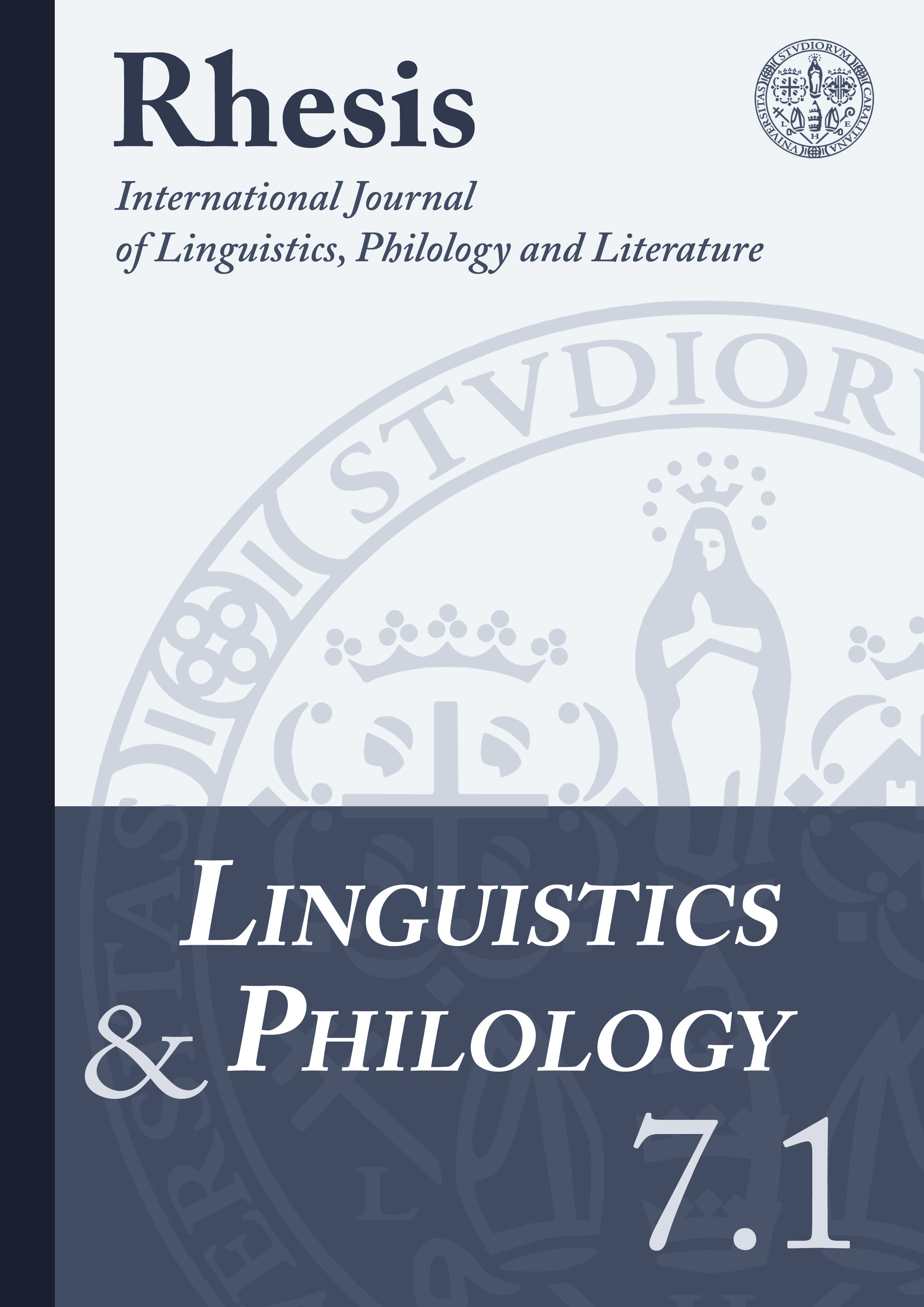Greek, Latin and Palaeo-Balkan Languages in Contact
Abstract
Focusing on the area of Danubian provinces of Roman Empire, this paper aims at touching upon linguistic diversity and language change in north-western Balkans in Roman epoch. Using epigraphic evidence, it will address the questions of the impact of the spread of Greek and Latin in this area, which led to a gradual extinction of the native, Palaeo-Balkan languages. In Antiquity, linguistic situation in this area was extremely complex: a great variety of languages came into close mutual contact and in contact with Greek and Latin, which became dominant. These Palaeo-Balkan languages are relict languages, and they are known almost exclusively through the onomastics recorded in Latin and Greek inscriptions and through rare glosses, i.e. by the time they came to be documented, their speakers were already Romanized or Hellenized. Most of the documents that record native onomastics are at the same time testaments of Romanization/Hellenization; however, these inscriptions bear witness that the native population preserved the memory of their ethnic and linguistic background.
Downloads
References
ALFÖLDY, Géza (1964b), “Des territoires occupés par les Scordisques”, in «Acta Antiqua Academiae Scientiarum Hungaricae» 12, 107-127.
ALFÖLDY, Géza (1965), Bevölkerung und Gesellschaft der römischen Provinz Dalmatien. Budapest: Akadémiai Kiadó.
ALFÖLDY, Géza (1969), Die Personennamen in der Römischen Provinz Dalmatia. Beiträge zur Namenforschung, n. F. (Beiheft 4). Heidelberg: C. Winter.
EICHNER, Heiner (2004), “Illyrisch – die unbekannte Sprache”, in Die Illyrer. Katalog zu einer Ausstellung von archäologischen Funden der albanischen Eisenzeit (12. – 4. Jh. v.Chr.) im Museum für Urgeschichte des Landes Niederösterreich, Asparn an der Zaya, Asparn/Zaya: Museum für Urgeschichte, 92-117.
GRBIĆ, Dragana (2013), “О antroponimiji Azala” [Anthroponymy of the Azali], in «Lucida intervalla» 42, 119-142.
GRBIĆ, Dragana (2014), Plemenske zajednice u Iliriku. Predurbane administrativne strukture u rimskim provincijama između Jadrana i Dunava (I-III vek) [Tribal Communities in Illyricum. Pre-urban Adminitrative Structures in Roman Provinces Between Adriatic and the Danube]. Belgrade: Institute for Balkan Studies Serbian Academy of Sciences and Arts, Special editions 125.
KATIČIĆ, Radoslav (1962), “Die Illyrischen Personennamen in ihrem südöstlichen Verbreitungsgebiet”, in «Živa Antika» 12 (1), 5-120.
KATIČIĆ, Radoslav (1963), “Das mitteldalmatische Namengebiet”, in «Živa Antika» 12 (2), 255-292.
KATIČIĆ, Radoslav (1964a), “Namengebiete im römischen Dalmatien”, in «Die Sprache» 10, 23-33.
KATIČIĆ, Radoslav (1964b), “Suvremena istraživanja o jeziku starosjedilaca ilirskih provincija” [Die neuesten Forschungen über die einheimische Sprachschicht in den illyrischen Provinzen], in Alojz BENAC (ed.) Simpozijum o teritorijalnom i hronološkom razgraničenju Ilira u praistorijsko doba održan 15. i 16. maja 1964, Sarajevo: Naučno društvo SR Bosne i Hercegovine, 9-58.
KATIČIĆ, Radoslav (1965), “Zur Frage der keltischen und pannonischen Namengebiete im römischen Dalmatien”, in «Godisnjak Centra za balkanol. ispitivanja» 3, 53-76.
KATIČIĆ, Radoslav (1968), “Die einheimische Namengebung von Ig”, in «Godisnjak Centra za balkanol. ispitivanja» 6 (4), 61-120.
KATIČIĆ, Radoslav (1976), Ancient languages of the Balkans. The Hague & Paris: Mouton.
KRONASSER, Heinz (1965), “Illyrer und Illyricum”, in «Die Sprache» 11, 155-183.
LOMA, Svetlana (1997), “Zur Frage des Municipiums S. und seines Namens”, in Mélanges d’histoire et d’épigraphie offerts à Fanoula Papazoglou, Beograd: 185-230.
LOMA, Svetlana (2002), “Princeps i peregrini incolae u municipiju S(plonistarum?). Epigrafski prilog istoriji romanizacije u provinciji Dalmaciji”, in «Živa Antika» 52, 143-179.
LOMA, Svetlana (2003-2004), “Domaće stanovništvo municipija S. u svetlosti novih epigrafskih svedočanstava”, in «Starinar» 53-54, 35-63.
MÓCSY, András (1968), “Azali”, in RE Suppl. XI, cols. 345-346.
MÓCSY, András (1974), Pannonia and Upper Moesia. History of the Middle Danube Provinces of the Roman Empire. London & Boston: Routledge and Kegan Paul.
POLASCHEK, Erich, Alexander SERACSIN (1937), “Neue Römersteine des ager Carnuntius”, in «Der römische Limes in Österreich» 18, 107-128.
POLOMÉ, Edgar (1982), “Balkan languages (Illyrian, Thracian and Daco Moesian)”, in John BOARDMAN, I. E. S. EDWARDS, N. G. L. HAMMOND and E. SOLLBERGER (eds.), The Cambridge Ancient History, vol. 3: 1, 2nd. ed. London & New York: Cambridge University Press, 866-888.
WILKES, John J. (1969), Dalmatia. History of the provinces of the Roman Empire vol. 2. London & Boston: Routledge and Kegan Paul.



